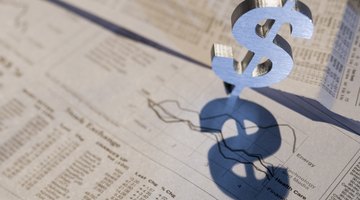In the late 1990s and early 2000s, a series of scandals caused investors to mistrust the trading practices of mutual funds. In 2004, the Securities and Exchange Commission established a set of rules for mutual fund managers. These rules include verification that both parties in a trade have complied with securities regulations before and after the trade is complete. The fund's chief compliance officer oversees issues related to pre-trade and post-trade compliance.
Pre-Trade Compliance Functions
The investment adviser performs pre-trade testing to ensure that the trade meets with federal securities laws. She must also test to make sure the trade complies with the fund's investment policies, including investment limit restrictions and fund disclosure requirements. Advisers who work with large investment funds often use trade order management software to verify that the trade meets these specific requirements. These software packages can notify traders if their trade is in violation and place "hold" orders on potential trades.
Pre-Trade Compliance Process
Pre-trade compliance checks allow mutual fund managers to avoid trades that could damage the fund's capabilities. The compliance staff, led by the chief compliance officer, establishes a set of rules based on federal securities regulations and the fund's internal policies. The compliance staff enter these rules into the compliance software. The fund managers and traders use the software to check for rules violations. For instance, a pre-trade compliance screening can determine if a trade will push a fund beyond its internal limits for investment in a specific company or industry.
Post-Trade Compliance Functions
Even if a trade passes the pre-trade compliance process, traders must conduct a post-trade compliance check. Fund managers and chief compliance officers conduct periodic post-trade compliance checks. The compliance officer creates a checklist of criteria that previous trades must pass, including government regulations and fund requirements. The compliance team can then review these trades with the checklist. The team conducts this review manually if the fund has very few trades or with software tools if the fund conducts numerous trades between compliance checks.
Post-Trade Compliance Example
Fund managers may find that trades made during the trading day met with all pre-compliance standards but did not meet those same rules at the end of the trading period. For instance, a fund promises in its prospectus that it will invest 15 percent in the medical technology sector. The trader makes a trade for a medical technology stock that skyrockets in value during the trading day. The high value of the stock places the fund's medical technology investment over the 15 percent limit. The fund manager must authorize trades to sell off the excess stock and place the fund back into compliance.
Related Articles
References
Writer Bio
Living in Houston, Gerald Hanks has been a writer since 2008. He has contributed to several special-interest national publications. Before starting his writing career, Gerald was a web programmer and database developer for 12 years.









